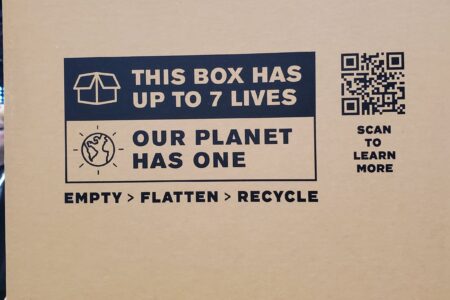2021 packaging machinery trends are evolutionary rather than revolutionary

Image courtesy of Rozum
A new report from PMMI (the Association for Packaging and Processing Technologies) Business Intelligence highlights the seven trending areas in the US packaging machinery market, which are likely trending around the world as well. There’s nothing really new or eye-opening on the list, rather, they are trends that have been emerging over several years, and all quite rapidly.
The 2021 State of the Industry US Packaging Machinery reports that packaging machinery production total shipments in the United States increased 14.7% between 2015 and 2020, with a packaging order backlog increase of 22.3%. According to PMMI, the seven areas currently impacting the packaging machinery market range from technology to sustainability to e-commerce, and include:
Automation and Robotics
To achieve higher efficiency and productivity, more packaging machinery companies are embracing automation in their packaging lines and leveraging smart manufacturing – such as machine vision – to do so. The robotics sector is also a rapidly growing one within the packaging machinery market, with the evolution of Artificial Intelligence (AI), 5G, and expanding IoT environment. In this age of Covid, ‘cobots’, or collaborative robots are designed to be safer for humans to work in close proximity. (The cover story in our upcoming November 2021 issue discusses the expansion of automation and robotics within the packaging machinery market.)
IIOT and Wireless Connectivity
The Industrial internet of things (IIoT) continues to impact the product lifecycle in the packaging industry including design, operation, maintenance, and supply chain. Per the report, the progress of conventional wireless network in smart manufacturing had lagged due to its inability to maintain stable connections and latencies, but innovations that perform better than other wireless protocols such as Wi-Fi and Bluetooth are emerging.
Cybersecurity
Ransomware attacks on major F&B and retail companies such as Cadbury and Target, and JBS, the world’s largest meat processor, highlight the vulnerability of the critical infrastructure of manufacturers across the industrial supply chain to increasing levels of cyber-attacks. (The ransomware story in our October 2021 issue – Ransomware is Rampant: Is Your F&B Business Safe? – offers details measures companies can take to protect themselves against cyber-attacks.)
Sustainability and Flexible Packaging
Many food brands have invested in packaging innovations and have implemented sustainability initiatives in their production and packaging lines due to consumer demand. However, the PMMI report points out that machine modifications or adjustments are often needed to achieve sustainable packaging goals. The challenges CPGs face when moving to more sustainable packaging provide opportunities for OEMs (Original Equipment Manufacturers) to explore applications with customers:
- Secondary packaging machines such as conveyors must be able to handle material reduction strategies, including lightweight corrugated.
- Machines need to run different style boxes to accommodate sustainability strategies, such as using the right size box. Case packers with a smaller footprint can help achieve sustainability goals through reduction in energy usage.
- A more efficient process of unpacking the contents of a pallet and repacking them into different sizes or variety packs is needed, with a focus on reducing material usage.
Furthermore, the flexible packaging industry is innovating to meet sustainable and recyclable packaging demands by creating compostable or sustainable components such as films and pouch closures.
Sustainability is a key area of coverage within T&CTJ, including sustainable packaging. Sustainable packaging and technology articles this year alone can be found in the February issue, Sustainable Packaging Remains a Top Priority for Consumers and Brands Alike; the April issue, Digitalisation: The Missing Piece in the Sustainability Puzzle; and in the June issue, How Sustainability Trends are Impacting Single Serve [Packaging].
Material Innovations
Many food and beverage brands – especially coffee and tea brands – are increasingly using recyclable board-based packaging, compostable packaging, and 100% recycled paper packaging. Some companies have even pledged long-term research commitment in packaging material innovation. (The article in our September 2021 issue – Compostable Packaging for Coffee & Tea: How Viable is It? – discusses the pros and cons of compostable packaging.)
Waste Reduction Legislation
In June 2020, US representatives introduced the Plastic Waste Reduction and Recycling Act. If passed, the act will guide the director of the Office of Science and Technology Policy to establish a plastic waste reduction and recycling program to improve the global competitiveness of the US recycling industry. The act further aims to reduce plastic waste and encourage research into and technologies for recycling infrastructure.
E-Commerce
And, of course, e-commerce has become an increasingly important factor in the industry (across many industries!). For example, sales of coffee and tea products purchased online surged during the pandemic and remain strong. Package design must maximize packing space, and there is a trend for e-commerce packaging to use more pouches and easily packable trays, and less glass.
The report notes that the shift in purchasing habits will continue to drive demand for packaging machinery as e-commerce requires increased touchpoints to reach the customer, increased packaging, and supply chain challenges.
- Vanessa L Facenda, editor, Tea & Coffee Trade Journal.
Keep in touch via email: [email protected]
Twitter: @TCTradeJournal or LinkedIn: Tea & Coffee Trade Journal.



